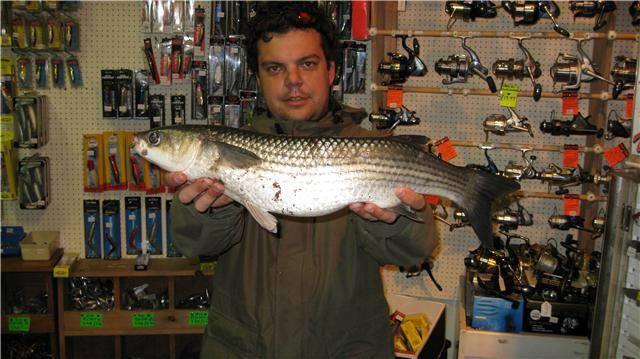When it comes to Fly Fishing, the mighty Grey Mullet is one of the few u.k species that still gets me excited! I spent 10 years as a Fly casting instructor and guide, and have landed numerous double figure Trout, Salmon, Seatrout, and Pike. I have even managed Bass up to 9lb on the fly, yet a 5lb plus Mullet in my eyes, beats them all!
I think the reasons I get so excited about fly fishing for Mullet, when they are feeding on the Sand flies and Maggots are; it doesn’t happen all the time. The conditions need to be just right, so it’s not the type of fishing you can just decide to do on your next day off. 1st you need a storm to dump a good amount of seaweed on the beach, then you need a few weeks for it to rot and become a breeding ground for flies. You then need the big spring tide to wash out the Flies and Maggots, while being calm enough to keep a fly on the waters surface without the waves on the shoreline burying your line in weed and stones (in the video the conditions were right on the limit of being able to fish. I prefer to fish from the beach normally, but on the morning the video was filmed, the swell was too big so we had to fish from the wall, behind the waves breaking on the shore). Any second storm before this happens, tends to always pick up the seaweed from the beach, washing it back out to sea and ruining any chance of Mullet fishing for another month! My 2nd reason is that my best Fly caught Mullet is just over 6lb yet I have hooked into maybe 4 others that were bigger and not landed them. The biggest I have hooked looked to be around the 10lb mark! I hooked it when fishing on my own, again, conditions similar to that in the video and I knew as soon as I set the hook, I was never going to be able to pull it through the surf! 25 minutes into the fight and the fish twice nearly emptying my fly reel of it’s 200 yards of backing, I managed to borrow a passer by’s phone. The only number I could think of off the top of my head was a friend in Rousdon, some 3 miles away from where I was! Mike was eating his dinner when I phoned in shear panic, begging him to bring a drop net. The fish was tiring, but there was no point in rushing, Mike was on his way. Some 15 minutes later (which felt much longer) Mike was running along the wall towards me carrying a very large drop net. In my mind we had already landed the fish, we had quickly weighed it, done the photos and released the fish. Sadly this wasn’t to be! Mike lowered the net down the side of the wall, and even though the swell was quite big, landing the fish should have been straight forward. The Mullet was exhausted and laying on the surface on it’s side. Most of my backing line was back on my reel, and it was just the tides current making things slow. I don’t know to this day whether it was the Fly line lifting out of the water during the final part of the retrieve, and increasing the weight load on the rod. Myself, thinking it was all over and trying to get the Mullet into the net too quickly. Or was it just really hard luck…. The hook, weakened by the long fight, opened up, and pulled out of the fishes mouth! The Mullet was so tired it stayed laying on it’s side at the surface for a few seconds, before righting itself and powering off with it’s huge paddle tail. The dream of landing that fish still haunts me, and is probably the main drive for me to keep going back.
Lets look at the set-up: You don’t need anything special, your Trout fly rod, reel, and Line will be fine. I started off using an 8ft, #5 weight, set-up, and this was great fun even with a 2lb Mullet. I changed up to a 10ft #7 weight later on simply because my reel holding 70 yards of backing had been emptied a couple of times resulting in lost fish. My heavier set up with a large arbor reel holds 200 yards of backing. Mullet have great eyesight and are easily “spooked” so a low diameter 3lb – 6lb leader is needed. The Mullet are feeding on small Sand flies, and Maggots, Imitating these is fairly easy. A small brown dry fly tied on a size 14 or 12 hook, or a floating maggot imitation is perfect.
I would recommend only trying this style of Mullet fishing if you are a proficient caster. If you are not, then you might struggle when it comes to lifting the line off the water each time a wave breaks on the shoreline (even a small wave will wrap your fly line in seaweed), the other issue is the gradient of the beach and the steep bank behind you, that you don’t want to be constantly hitting with the fly on the back cast.
This style of fishing is all about casting accuracy. The Mullet move in groups along the surface sucking in the plentiful food available. The top of the head and eyes are often above the surface, so keep movement to a minimum as to not put them off feeding. Simply find a group or single fish feeding well, and land your fly in front. Too close and you risk spooking him, too far away and he might not find it.
Occasionally the Mullet go into a complete feeding frenzy (this can be seen in the video), when this does happen it is almost a fish a cast!


